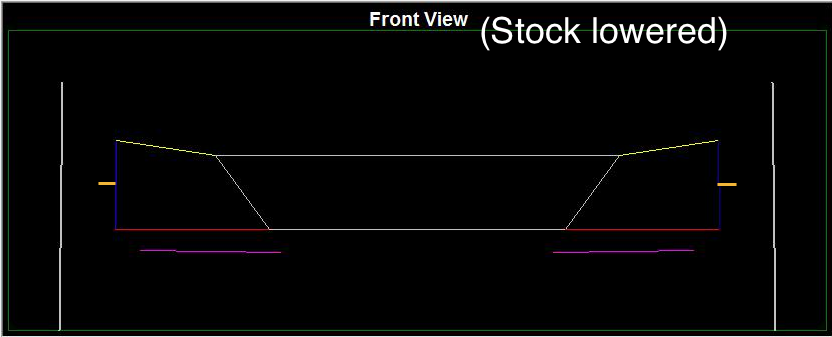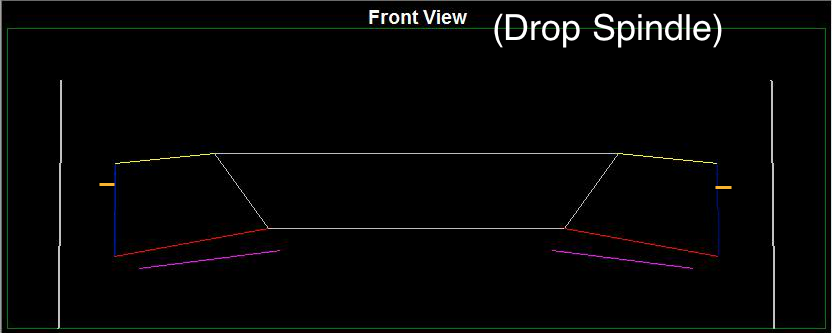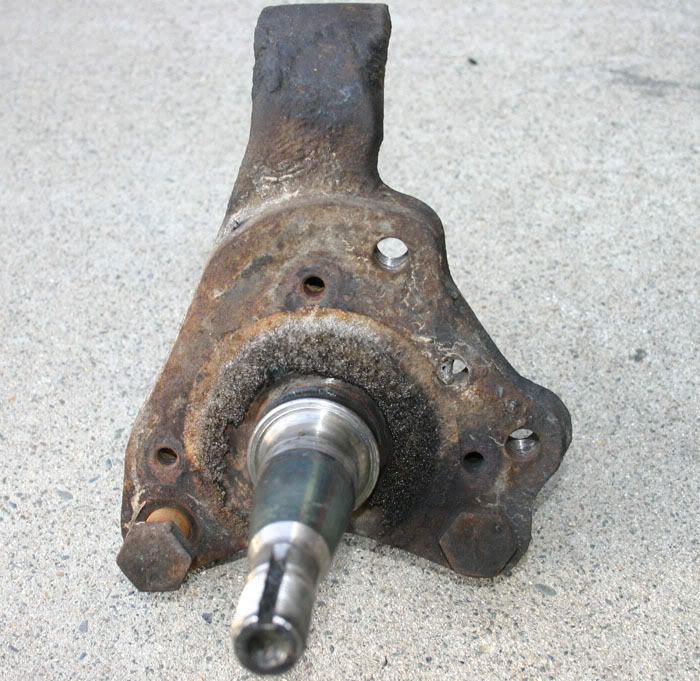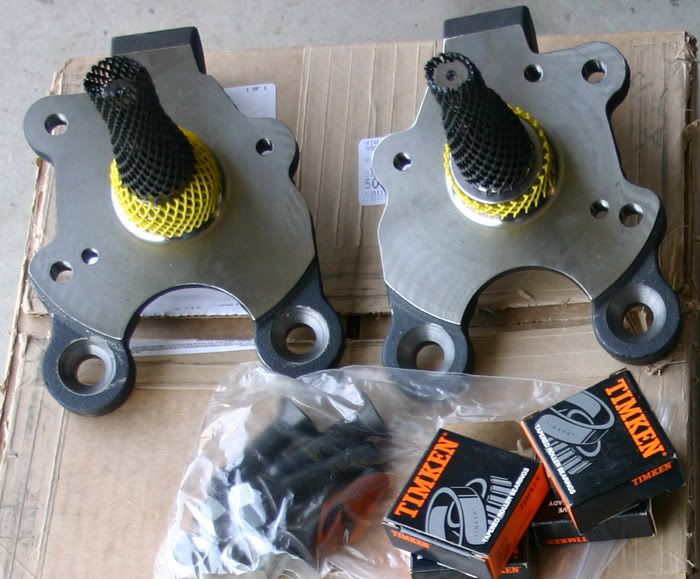abodyjoe
Well-Known Member
I'd like to see them.
Let me see if he has any pics of them. If he does ill post them for ya.
I'd like to see them.
Here's a couple when new (circa 1999). Note: All parts came from STAN'S HEADERS. 1.5" primary tubes, 2" secondary tubes into a 2.5" ball socket collector.
What part is barely going to work?


The dropped spindles are necessary for two reasons.
At the current height there is not enough clearance at the lower bump stops even though I use 11/16 urethane pieces. The second reason is due to the drop in the current suspension, the roll center is below ground. The front roll center should be above ground in the 5" range. Once the spindles are installed, I get the crank up the t bars to put the height back to where it is now. This will correct these issues properly and should make a dramatic difference.
Once the spindles are installed, I will play with the heights to get an optimal 1.5 degree rake. At this point, I am thinking I may have to raise the rear slightly, but I want to measure the anti squat angle first. I will include pictures of my process.
Yes getting more height does take more preload, but that isnt preload like you think. The weight of the car and the rate of the tbar wont change. What WILL change is you will get into the higher range of the bar when you compress and use your new found gain in up travel. That is where you will see more "rate". The bump steer thing with the spindles I dont buy, since the only thing changed is the center of the hub. Control arm angles and tierod angles arent effected.
Probably typical for a tri-Y: better than the best iron manifolds, broader torque band than 4-1 but less peak #'s, a compromise. I'm sure the small primary tubes kill power above 5K RPM.
The stock 340 likes them. I'm thinking I may have to go with TTI's when I do the Edel heads & bigger cam on the 360.
see if this works....
here is his answer when i asked how he thinks they flow..
Those are Dbdartman's with the 68 Dart post car, IIRC ???
He's from New Jersey also??
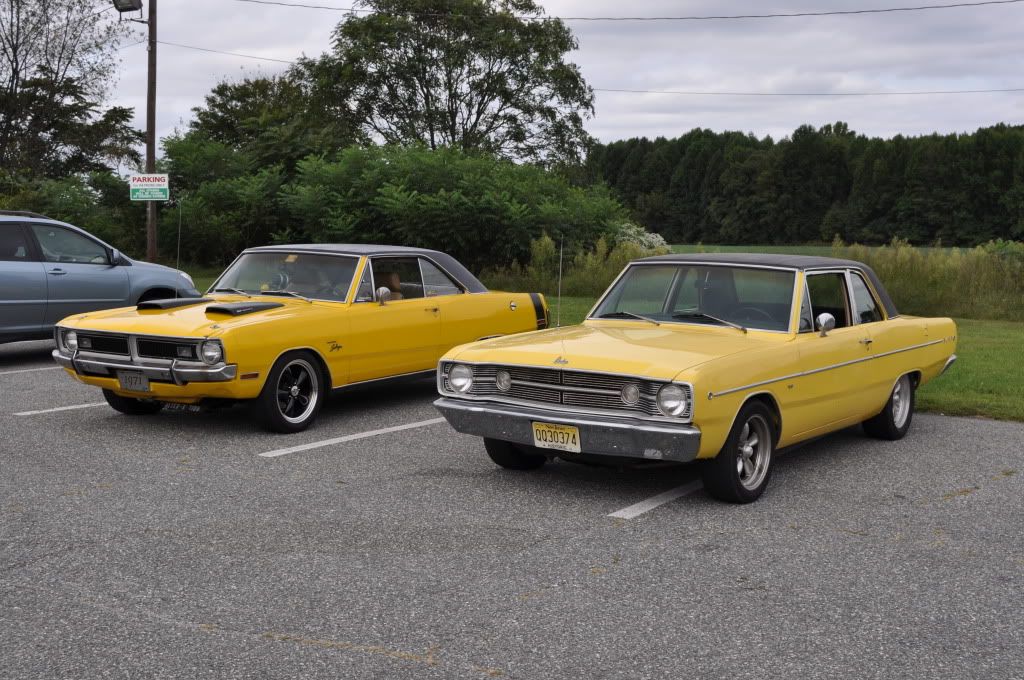
I just put the Hotchkis springs on my 74 Dart and it lowered my car 3 inches in the rear. I had to put the stock mounts back on and it was still 1' lower than stock but rides very nice with my Bilsteins.
see if this works....
here is his answer when i asked how he thinks they flow..
I see what you are saying. Basically with the drop spindles you raised your suspension and gave your tierod more angle. So you had bumpsteer with your car at stock height with stock spindles then? Drop spindles don't change your attaching points.The tie rod angles DO change. The control arm mounts stay in the same place, but, the hub moves 2" up and away from them. Which means that when everything is sitting on the ground, you have in effect lowered the control arm mounts by 2" (since the height of the wheel doesn't change). The steering arms will end up with more angle. I can take pictures of my steering arms if you don't believe me, but it does change the angle pretty significantly. Better yet though, I'll post a link up to another thread where a member actually ran my suspension geometry through a suspension program, and compared it to a stock suspended car...
see these graphs here...
It's a pretty long thread and discussion, but you can see from the graphs (produced using my suspension geometry measurements) that the bump steer was increased with the drop spindles. The first few graphs are the stock suspended car (lowered a bunch), the second set are based on my car (72b&b).
The torsion bar adjusters don't really add or subtract preload. They don't actually twist the bars. If you take a look at the lower control arms, you can see that what actually happens is the adjuster changes the angle of the lower control arm with relation to the torsion bar anchor in the LCA. This is no different than clocking the LCA's. It changes the amount of available suspension travel, but has no effect on spring rate.Torsion bars are straight springs. Unlike a progressive spring, the spring rate of the torsion bar is fixed, and constant. For example, if you have 150 lb/in torsion bars, that's always what they'll be. 150 lbs of force per inch of deflection. Now, if you're using more of that travel, then you will see higher suspension loads. But the spring rate didn't change. And of course, your handling and ride will improve greatly if you're not bottoming out your suspension all the time.
I see what you are saying. Basically with the drop spindles you raised your suspension and gave your tierod more angle. So you had bumpsteer with your car at stock height with stock spindles then? Drop spindles don't change your attaching points.
